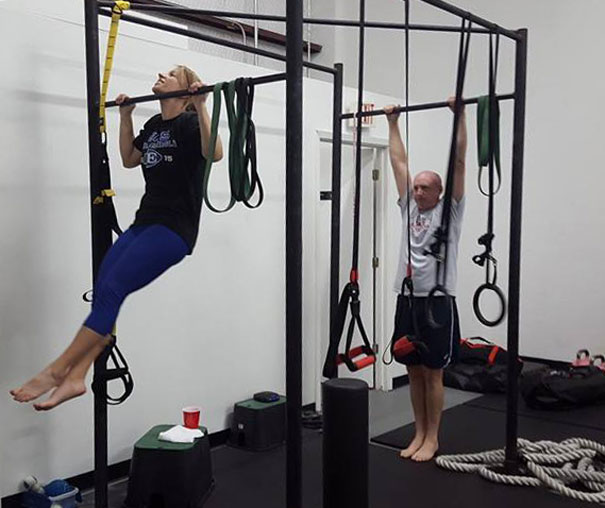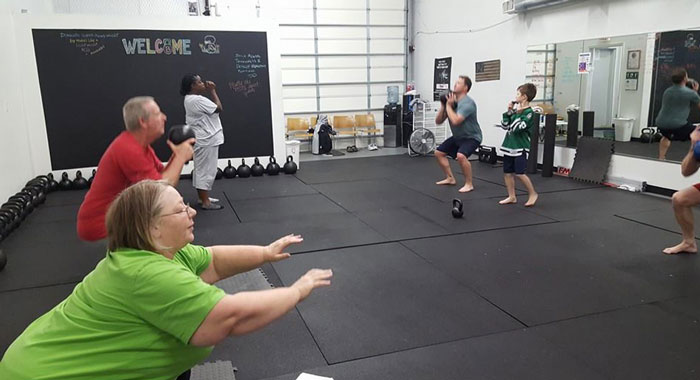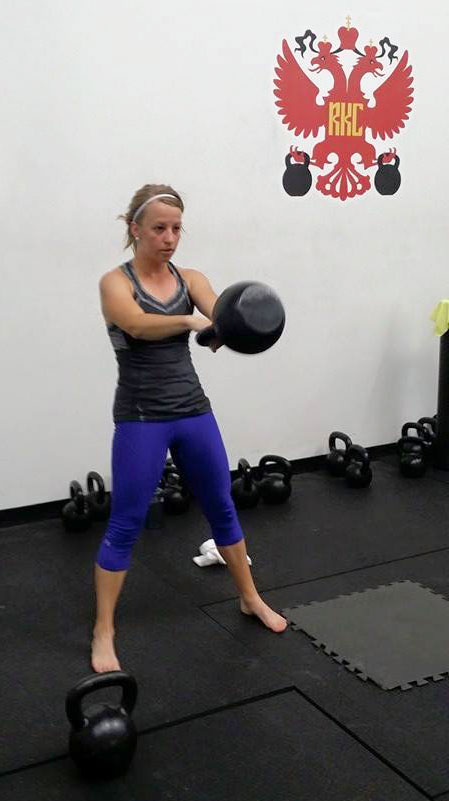
Why are you training? What is your goal? Is your goal to lose weight? Be stronger? Play better? Is your training working? If not, then you must re-evaluate your training and see what is keeping you from reaching your goal. Are you injured? Are you tired or sick? If so how did it occur and how do you get better? Why train in a way that does not make a positive difference in your life? You are exercising for a reason—it could be improved performance, fat loss, or even stress relief.
Do not just exercise on autopilot; keep the goal the goal. Keep the goal in the forefront of your thoughts. You must have your goals and visions in your daily operating system so that they are always present. This will allow you to adjust your plan, because when you are doing something that does not fit the goal, you know it. If what you are doing doesn’t make you better and move towards your goal, there is no real point in doing it. If you know what you are striving for, everything should lead you to that goal.
You need to look at your plan, evaluate where you are and ask yourself if it is working. If not, don’t despair, just look for alternatives in diet and exercise. No plan, pill or tool will be the magic answer. Try something, evaluate it and repeat until you find what puts you a step closer to your goals. Remember, “better is better.” A tiny improvement is still an improvement and it is a start.

Do Not Train in Pain
Training in pain is just a faster way to the “Dark Side”! The only outcome you can expect when you train in pain is injury, compensation, and a failure to reach your goals. Unless you are peaking for a specific purpose—like an Olympic gold medal—then don’t go here. What benefit will be gained from injury? If there is pain, stay away from what causes it, and see your doctor. Stop training until released by your medical professional.
Have Fun!
I push myself hard all the time, but I always have fun with it. If you are not happy when training, you are missing all the benefits. If you are not happy or having fun, then exercise becomes “just another thing I have to do”. It should be a positive experience that you look forward to. I try to make my training fun and enjoyable. If it is something you dread, you will not get any real benefits from your time and effort. It should be time away from work and stress. Live in the moment and do not think about the stress from the day/life for an hour.
Take a Break
It is okay to take a break. You can push really hard for 4-5 weeks before your body says “enough”. Put your plan together so that you have time to relax and recover. You need to schedule down time every 3-4 weeks in your training cycle or you will break. The down time can be just a change in activity, hiking instead of running, playing at the park instead of being in a gym. Change is good and speeds up recovery. It also takes the drudgery out of training.
Breaks are good for you, even if you do not think they will help you reach your goals. You cannot drive a Ferrari at 190mph all day, every day without some wear and tear. You have to pull into the pit and take a few minutes/days to recover before hitting the road again.
Training Does Not Have to be Your Life
Exercise should be something that makes you feel better, move better, and get stronger. It should not be something you dread, or that causes pain or injury. If it does any of those things, evaluate what you are doing and make sure it is in alignment with your goals. Spend the minimum amount of time needed to make the changes to reach your goals.
Your Life Needs to be Your Life
Exercise should make you more useful and capable so that you can be there for your family, friends, and loved ones. Be fit to enjoy your life for a long time with your loved ones.

Now that we have discussed a few thoughts on training, where do you go from here? Everyone is at a different place in their life, training and recovery, but the points still work and they must be adapted for the individual. For example, I am now in Chiropractic School full time. My typical day starts at 4:50am and ends at 10:30 or 11pm. I am at school from 7-5PM, drive home for up to 90 minutes, and when I get there I have two teenagers and a child under one year old to deal with—along with my own training, meals, studying, and I have to try and find a few minutes to tell my wife that I love her. There are days when I might get only three hours of sleep a night for several nights in a row. If I did not follow the rules, I would end up burned out even more, and injured due to training. I have to train as it is my stress relief and helps me maintain my fitness level so I can teach at certification workshops.
Considering all of that, what do I do? I base my life on Strong Medicine. It is the guidebook for living a healthy and hopefully long life. I have fully bought into the concept of the Stress Cup. When it is full, or close to full, I know I need to back off somewhere—and that usually means backing off of hard training. Strong Medicine is part of the blueprint for my future practice. Buy it, read it, and implement the plans for eating, sleeping, recovery and stress management.
How the Strong Medicine Plan Works in My Life:
I eat as clean as possible every day by eating lots of vegetables and some protein at every meal. I try to keep a good source of energy, antioxidants and building blocks in my system to help with recovery. I am also very particular in supplementation with fish oils, antioxidants and other similar vitamins and minerals. I check my grip strength in the morning and before I train to determine how hard I can train that day. Here’s an article I wrote about grip strength and training on the Strong Medicine Blog.
I plan simple workouts that I can easily scale to the appropriate level for the day. I like to get some training in every day. I try to make sure at the very least, I do 100 kettlebell swings.
The following plan can have anywhere from 100-200 or so swings. The number of swings will depends on your sleep, time to train, and overall Stress Cup level.

Monday
Swing/Squat.
10 swings followed immediately by 1 Squat, 10 Swings/2 squats, 10 Swings/3 squats, 10 swings/4 squats, 10 swings/5 squats. I will start the next series at 5 squats and go to 1 for my base of 100 swings. If it is a heavier day, I will go back up the ladder and/or back down for 200 swings. This can be body weight or Goblet Squats with weight.
Tuesday
Swing/Pushup
I follow the same plan as the Swing/Squat
Wednesday
Swing/Pullup
Hmm, there is a pattern here…see above.
Thursday and Friday
I start with Swing/Squat and Friday would be the Swing/Pushup. The following Monday, I would start with the Swing/Pullup.
I like bodyweight work but this could be done with any combination of exercises. You could do presses, double kettlebell front squats, kettlebell rows etc. whatever you need to add to your session. I tend to keep rest to a minimum. I find that it is easy to hit almost 90% of heart rate max doing the exercises as a superset, then it takes about 30 seconds for my heart rate to drop to about 70%, when I can perform another set. This is basically the Burst Cardio idea from Strong Medicine. I use this approach to keep training while staying strong and healthy.
***
Senior RKC Paul Britt has been an RKC kettlebell instructor since 2006. Paul trains people at workshops and privately. Paul is currently attending Parker University working on his Doctor of Chiropractic degree Paul has served as an assistant instructor at many RKC and HKC Courses, is a Certified Kettlebell Functional Movement Specialist (CK-FMS) and works with some of the top Chiropractors in North Texas. Please visit his website for more information or to contact him